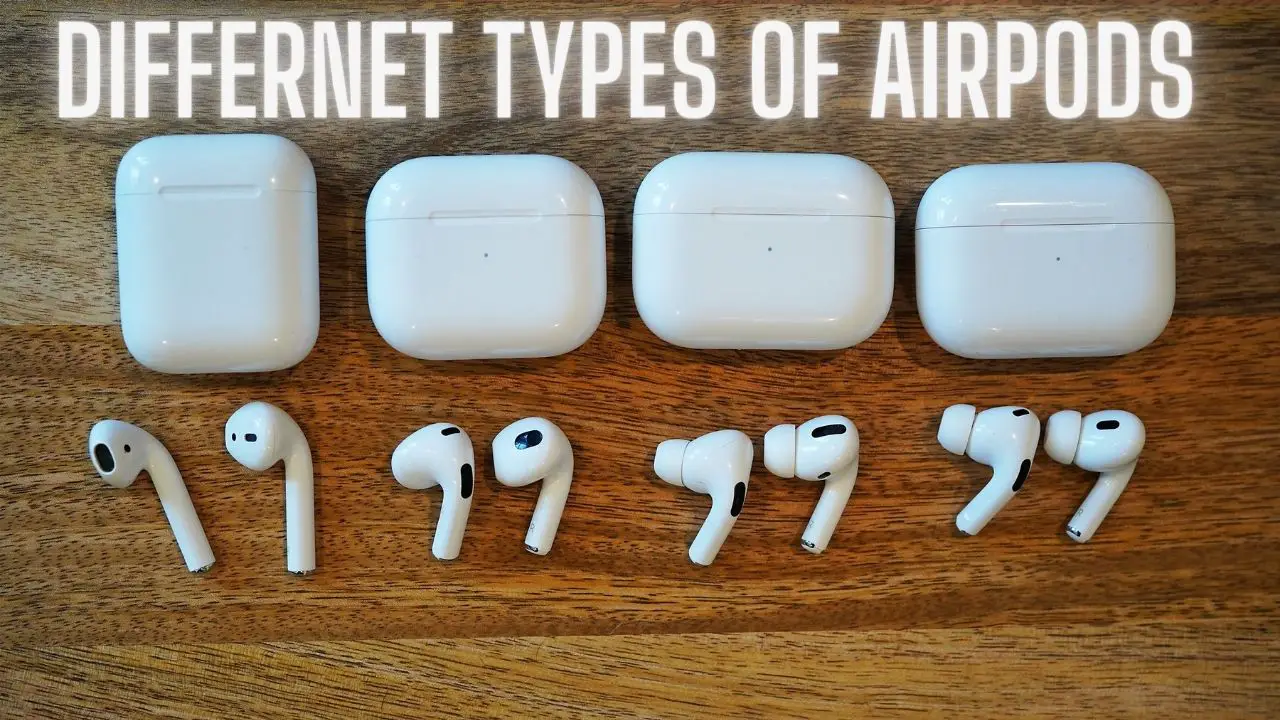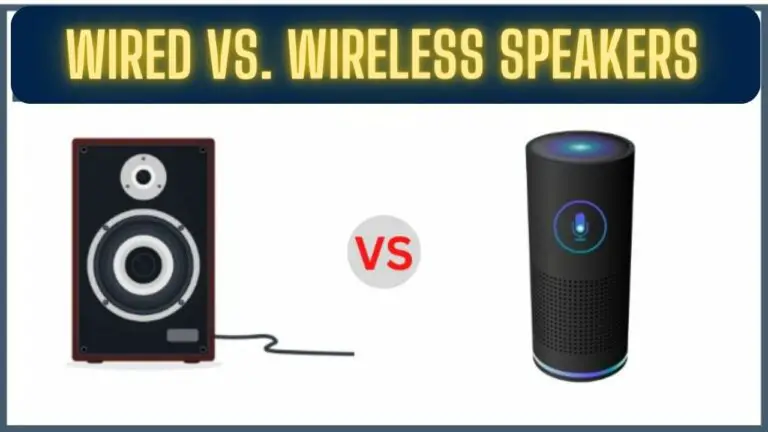A Guide to Different Types of AirPods: Exploring the Spectrum
Introduction
Apple’s AirPods have become iconic in the world of wireless earbuds, offering seamless connectivity, impressive sound quality, and a sleek design. With various iterations released over the years, it’s essential to understand the different types of AirPods available to choose the one that best suits your preferences and needs. In this article, we’ll delve into the distinct categories of AirPods and explore their features and capabilities.
1. AirPods (1st Generation):
In 2016, Apple introduced a groundbreaking product that would revolutionize the way people listen to music and engage in calls: the AirPods. The first-generation AirPods marked the beginning of Apple’s foray into the world of truly wireless earbuds, setting a new standard for convenience, connectivity, and design. Let’s delve into the features and impact of the AirPods (1st Generation).
Unveiling a New Era:
The AirPods were unveiled alongside the iPhone 7, a smartphone that famously eliminated the traditional 3.5mm headphone jack. This move signaled Apple’s commitment to advancing wireless technology and encouraging the adoption of wireless audio solutions.
Key Features:
The AirPods (1st Generation) were packed with innovative features that set them apart:
- Automatic Pairing: The AirPods seamlessly paired with Apple devices, including iPhones, iPads, and Macs, through a proprietary process. The process was as simple as opening the charging case near a compatible device.
- Apple W1 Chip: This custom-designed chip facilitated effortless pairing, extended battery life, and robust wireless connectivity. It allowed users to switch between devices with ease and enjoy a stable wireless connection.
- Touch Controls: The AirPods introduced touch controls on the earbuds themselves. Users could tap to play, pause, or skip tracks, and activate Siri for voice commands.
- Sensors: Optical sensors and accelerometers detected when the AirPods were in your ears, pausing playback when they were removed.
- Battery Life: The AirPods offered up to 5 hours of listening time on a single charge, and the accompanying charging case provided additional charges, extending the total listening time.
Design and Aesthetics:
The design of the AirPods (1st Generation) was minimalistic and recognizable. They featured a sleek white appearance with a distinct stem extending from each earbud. This design ensured a comfortable fit and made them easily identifiable as Apple products.
Impact and Legacy:
The introduction of the AirPods (1st Generation) marked a significant shift in the audio industry. While wireless headphones were not a new concept, the AirPods popularized the idea of completely cord-free earbuds that seamlessly integrated with the Apple ecosystem.
The AirPods (1st Generation) were met with a mixture of excitement and skepticism upon their release. Some users were impressed by their convenience and ease of use, while others questioned their price and expressed concerns about losing the small earbuds. However, over time, the AirPods became a cultural phenomenon, symbolizing Apple’s ability to create products that blend innovation, functionality, and style.
Conclusion:
The AirPods (1st Generation) laid the foundation for Apple’s subsequent developments in the wireless audio space. Their impact can be seen in the subsequent generations of AirPods, AirPods Pro, and AirPods Max, each building upon the foundation of wireless convenience and technological innovation. The AirPods (1st Generation) forever changed the way we interact with audio, setting a precedent for the future of wireless earbuds.
2. AirPods (2nd Generation):
Following the resounding success of the first-generation AirPods, Apple took the wireless audio experience to the next level with the introduction of the AirPods (2nd Generation) in 2019. These upgraded earbuds retained the signature design while integrating new features and enhancements that further solidified Apple’s dominance in the wireless earbud market. In this article, we delve into the features, improvements, and impact of the AirPods (2nd Generation).
Enhanced Connectivity:
The AirPods (2nd Generation) maintained the sleek and recognizable design of their predecessor while introducing significant improvements:
1. H1 Chip: One of the most notable upgrades was the integration of the Apple-designed H1 chip. This chip brought faster and more efficient wireless connectivity, enabling quicker device pairing, seamless switching between devices, and improved overall performance.
2. “Hey Siri” Voice Activation: With the H1 chip, users could activate Siri using voice commands. This hands-free feature added convenience by allowing users to ask questions, make calls, adjust volume, and more without needing to physically interact with their devices.
3. Wireless Charging Case: The AirPods (2nd Generation) included an optional wireless charging case. This case could be charged using any Qi-certified charging pad, eliminating the need for a Lightning cable. It offered more convenience and versatility for charging on the go.
4. Extended Talk Time: The improved efficiency of the H1 chip resulted in an extended talk time. Users could enjoy up to 3 hours of talk time on a single charge, making the AirPods even more suitable for long conversations.
5. Improved Latency: The H1 chip also reduced audio latency, enhancing the experience when watching videos and playing games.
Seamless Integration:
The AirPods (2nd Generation) seamlessly integrated with the Apple ecosystem, allowing users to switch between devices effortlessly. From iPhones to iPads and Macs, users could switch audio output with just a few taps.
Impact and Popularity:
The AirPods (2nd Generation) further cemented Apple’s dominance in the wireless earbud market. Their convenience, design, and integration with Apple devices contributed to their widespread popularity. The introduction of the H1 chip and “Hey Siri” voice activation marked significant steps forward in the evolution of wireless earbuds.
Conclusion:
The AirPods (2nd Generation) built upon the success of their predecessor by introducing new features and enhancements that improved the overall wireless audio experience. With improved connectivity, extended talk time, and hands-free voice activation, these earbuds captured the essence of Apple’s commitment to innovation and user-centric design. The AirPods (2nd Generation) set a new standard for wireless earbuds, and their legacy continues to influence subsequent generations of Apple’s audio products.
3. AirPods Pro:
In 2019, Apple introduced a new pinnacle of wireless audio technology with the AirPods Pro. Building on the success of the previous AirPods models, the AirPods Pro aimed to provide users with an immersive and customizable listening experience. With active noise cancellation, a redesigned form factor, and enhanced features, the AirPods Pro quickly became a sought-after choice for audiophiles and tech enthusiasts alike. In this article, we explore the innovative features, design, and impact of the AirPods Pro.
Active Noise Cancellation:
The standout feature of the AirPods Pro was active noise cancellation. This technology used advanced algorithms and microphones to analyze and counteract external noise, creating a cocoon of sound isolation for the listener. It allowed users to fully immerse themselves in their music or podcasts, even in noisy environments like airplanes or crowded streets.
Customizable Fit:
The AirPods Pro featured a redesigned form factor with customizable silicone ear tips. These tips not only provided a more secure and comfortable fit but also played a crucial role in creating an effective seal for the active noise cancellation technology. Apple included three sizes of ear tips to accommodate various ear shapes.
Transparency Mode:
In addition to noise cancellation, the AirPods Pro introduced Transparency mode. With a simple touch, users could switch to this mode, which used the built-in microphones to amplify ambient sounds. This allowed users to stay connected to their surroundings, making them ideal for situations like commuting or having conversations without removing the earbuds.
Adaptive EQ and Sound Quality:
The AirPods Pro featured Adaptive EQ, a technology that automatically tuned the low and mid-frequencies of audio to match the shape of an individual’s ear. This resulted in a balanced and immersive audio experience with enhanced sound quality.
Sweat and Water Resistance:
The AirPods Pro were designed to withstand sweat and water, making them suitable for workouts and outdoor activities. Their IPX4 rating provided protection against splashes from any direction.
Impact and Reception:
The AirPods Pro garnered widespread acclaim for their combination of cutting-edge technology and comfort. Audiophiles appreciated the improved sound quality and active noise cancellation, while the general public embraced the enhanced user experience and sleek design.
The introduction of the AirPods Pro demonstrated Apple’s commitment to continually pushing the boundaries of audio technology. By catering to those who desired both exceptional sound quality and customizable features, Apple solidified its position as a pioneer in the wireless audio market.
Conclusion:
The AirPods Pro exemplified Apple’s dedication to innovation and user experience. With active noise cancellation, customizable fit, and improved sound quality, these earbuds elevated the wireless audio landscape. They underscored Apple’s ability to anticipate and cater to user preferences, setting a new standard for wireless earbuds that deliver both exceptional audio and comfort. The AirPods Pro left an indelible mark on the world of audio technology and continue to be a preferred choice for those seeking a premium listening experience.
4. AirPods Max:
In 2020, Apple expanded its audio portfolio with the introduction of the AirPods Max, its first over-ear headphones. Designed to deliver an unparalleled listening experience, the AirPods Max combined advanced technology, high-fidelity sound, and a luxurious design. With features like computational audio, adaptive EQ, and spatial audio, the AirPods Max aimed to redefine what premium headphones could offer. In this article, we delve into the innovative features, design, and impact of the AirPods Max.
Unveiling a New Form Factor:
The AirPods Max represented Apple’s entry into the over-ear headphone market. With their distinctive design and premium build, these headphones combined elegance with cutting-edge technology.
1. High-Fidelity Sound: The AirPods Max featured custom-built drivers and high-fidelity audio for a rich and immersive listening experience. Each ear cup housed powerful neodymium magnet drivers that provided deep bass, accurate mid-ranges, and crisp highs.
2. Computational Audio: One of the standout features of the AirPods Max was computational audio. This technology used the Apple-designed H1 chip to apply complex algorithms in real-time, adjusting audio elements to deliver a dynamic and personalized listening experience.
3. Adaptive EQ: Adaptive EQ technology in the AirPods Max automatically adjusted the sound to the individual fit of the headphones, delivering optimal sound quality regardless of the listener’s head shape or ear position.
4. Active Noise Cancellation: Building on the success of the AirPods Pro, the AirPods Max featured advanced active noise cancellation technology. With eight microphones and powerful algorithms, these headphones effectively countered external noise, immersing users in their chosen audio.
5. Spatial Audio: Spatial audio was another groundbreaking feature of the AirPods Max. Leveraging dynamic head tracking, spatial audio provided a theater-like experience by placing sound virtually anywhere in a space, creating an immersive audio environment for movies, TV shows, and music.
6. Design and Comfort: The AirPods Max boasted an elegant design with a stainless steel frame and a breathable canopy made from anodized aluminum. The headband’s design evenly distributed weight, ensuring a comfortable fit during extended listening sessions.
Impact and Reception:
The AirPods Max represented Apple’s commitment to delivering premium audio experiences. While the headphones were positioned as a high-end offering, they garnered attention for their innovative features and luxurious build. Audiophiles and music enthusiasts were particularly drawn to the headphones’ ability to deliver studio-quality sound and advanced audio technologies.
Conclusion:
The AirPods Max marked Apple’s entrance into the high-end headphone market with a combination of sophisticated design, advanced technology, and exceptional sound quality. From computational audio to spatial audio, each feature contributed to an immersive and personalized listening experience. The AirPods Max demonstrated Apple’s dedication to pushing the boundaries of audio innovation and further solidified the company’s position as a leader in the audio industry.
5. AirPods (3rd Generation):
In 2021, Apple unveiled the AirPods (3rd Generation), adding another chapter to its wireless audio journey. These earbuds seamlessly blend features from previous models with new enhancements, offering users an updated listening experience that caters to their needs. With design elements reminiscent of the AirPods Pro and technological improvements, the AirPods (3rd Generation) continue to elevate the wireless audio landscape. In this article, we explore the key features, design, and impact of the AirPods (3rd Generation).
Balancing Comfort and Features:
The AirPods (3rd Generation) inherit design cues from both the original AirPods and the AirPods Pro, striking a balance between familiarity and innovation.
1. Design Aesthetic: The AirPods (3rd Generation) feature a design that closely resembles the AirPods Pro, complete with a shorter stem and an improved form factor. This design enhances both aesthetics and comfort.
2. Spatial Audio: One of the standout features of the AirPods (3rd Generation) is the inclusion of spatial audio. This technology creates an immersive listening experience by offering dynamic head tracking, making it feel as though sound is coming from different directions. This feature adds depth and realism to movies, TV shows, and music.
3. Adaptive EQ: Similar to the AirPods Pro, the AirPods (3rd Generation) come equipped with Adaptive EQ technology. This feature automatically tunes the sound to match the shape of the user’s ear, ensuring a balanced and high-quality audio experience.
4. Improved Sound Quality: The AirPods (3rd Generation) offer enhanced sound quality compared to their predecessors. Whether you’re listening to your favorite music, engaging in a phone call, or immersing yourself in a podcast, the improved sound profile delivers a more satisfying and engaging experience.
5. Hands-Free “Hey Siri”: Just like the previous models, the AirPods (3rd Generation) support hands-free “Hey Siri” voice activation. This functionality allows users to interact with their devices without the need for physical input.
Impact and Reception:
The AirPods (3rd Generation) were met with positive feedback from both Apple enthusiasts and new users. The combination of design elements from previous models, along with the incorporation of innovative features, resonated with individuals seeking a wireless audio solution that seamlessly integrates with their daily routines.
Conclusion:
The AirPods (3rd Generation) exemplify Apple’s commitment to delivering a refined listening experience that balances familiar design with cutting-edge technology. With improvements like spatial audio, Adaptive EQ, and enhanced sound quality, these earbuds continue to shape the wireless audio landscape. The AirPods (3rd Generation) stand as a testament to Apple’s ability to evolve and innovate, offering users an audio solution that enhances their lifestyle and enjoyment of music, calls, and entertainment.
6. AirPods Pro (2nd Generation):
The AirPods Pro 2nd Generation is a somewhat more sophisticated pair of wireless earbuds with an enhanced charging case with wireless charging capabilities, a more comfortable shape, better sound quality, and a number of cutting-edge features including active noise cancellation, transparency mode, adaptive EQ, and so on. With all of these characteristics, this professional is the perfect audio option for anyone looking for an immersive listening experience in any setting.
Comparison of AirPods Models
- Design and Build:
- AirPods (1st Generation): Similar design to traditional EarPods, with a longer stem and lack of silicone ear tips.
- AirPods (2nd Generation): Nearly identical design to the 1st generation, with minor improvements in connectivity and battery life.
- AirPods Pro: In-ear design with customizable silicone ear tips for a secure and comfortable fit, as well as a shorter stem and integrated touch controls.
- AirPods Max: Over-ear design with premium materials, including stainless steel and breathable knit mesh canopy, offering a luxurious feel and customizable fit with telescoping arms and an adjustable headband.
- Sound Quality:
- AirPods (1st Generation) and (2nd Generation): Decent sound quality with balanced audio and good clarity, but lacking bass depth and isolation due to open design.
- AirPods Pro: Improved sound quality with customizable ear tips, delivering richer bass and better isolation for immersive listening experience.
- AirPods Max: High-fidelity sound with custom-built dynamic drivers and computational audio for deep bass, precise mids, and crisp highs, enhanced by Adaptive EQ and Spatial Audio technology.
- Noise Cancellation:
- AirPods Pro: Active Noise Cancellation (ANC) technology blocks out external noise for immersive listening experience, adjustable between full ANC and Transparency Mode.
- AirPods Max: Industry-leading ANC technology with 20+ adaptive noise cancellation modes, offering unparalleled noise isolation and immersive sound.
- Connectivity:
- All AirPods models feature seamless connectivity with Apple devices, thanks to the H1 or W1 chip, enabling instant pairing, automatic switching between devices, and hands-free Siri activation.
- AirPods Pro and AirPods Max offer additional features such as Audio Sharing and spatial awareness for enhanced user experience.
- Battery Life:
- AirPods (1st Generation) and (2nd Generation): Up to 5 hours of listening time on a single charge, with an additional 24 hours of battery life provided by the charging case.
- AirPods Pro: Up to 4.5 hours of listening time with ANC enabled, or up to 5 hours with ANC disabled, with an additional 24 hours of battery life from the charging case.
- AirPods Max: Up to 20 hours of high-fidelity audio, talk time, or movie playback on a single charge, with up to 20 additional hours provided by the Smart Case for a total of 40 hours of listening time.
Overall, each AirPods model offers unique features and benefits to cater to different user preferences and needs, whether it’s portability, sound quality, noise cancellation, or battery life.
AirPods FAQS
What are AirPods?
AirPods are wireless earbuds developed by Apple. They connect to your devices, such as iPhones, iPads, and Macs, through Bluetooth, providing a wireless audio experience.
What are the different models of AirPods?
As of my last update in September 2021, there are several models of AirPods:
- AirPods (1st Generation)
- AirPods (2nd Generation)
- AirPods Pro
- AirPods Max
What is the difference between AirPods and AirPods Pro?
AirPods Pro offer active noise cancellation, customizable silicone ear tips for a better fit, and features like Transparency mode that allows you to hear your surroundings while wearing the earbuds. The regular AirPods do not have these features.
Are AirPods sweat-resistant or waterproof?
AirPods (1st and 2nd Generation) are not officially rated as sweat-resistant or waterproof, though they can handle some moisture. AirPods Pro have an IPX4 water resistance rating, making them suitable for workouts and light exposure to water.
Do AirPods work with Android devices?
Yes, AirPods can be used with Android devices, but some features like seamless pairing and iCloud integration may not work as they do with Apple devices.
How do I pair AirPods with my device?
For most Apple devices, you can open the AirPods case near your device and follow the on-screen instructions to pair. Once paired with one device, they should automatically connect to other devices associated with your Apple ID.
How do I control AirPods?
You can control AirPods using touch gestures. For instance, you can double-tap (or on AirPods Pro, squeeze) to play or pause audio, skip tracks, or activate Siri. With AirPods Pro, you can also press and hold the force sensor for switching between Active Noise Cancellation and Transparency mode.
How long is the battery life of AirPods?
Battery life varies depending on the model and usage. The original AirPods offered up to 5 hours of listening time, while AirPods Pro and Max have different battery life specifications.
Can I use only one AirPod at a time?
Yes, you can use a single AirPod for calls, listening to music, or podcasts. The stereo audio will automatically switch to mono when using a single AirPod.
How do I charge AirPods?
AirPods come with a charging case. The case itself can be charged using a Lightning cable, and it also charges your AirPods when you place them inside. AirPods Pro and Max also have wireless charging capabilities.
Conclusion
Each type of AirPods offers its own set of features, catering to different user preferences and use cases. Whether you prioritize convenience, sound quality, noise cancellation, or design, there’s likely an AirPods model that aligns with your needs. As technology continues to evolve, Apple’s AirPods lineup is expected to bring even more innovation to the world of wireless audio, enhancing the way we experience music, calls, and entertainment on the go.








